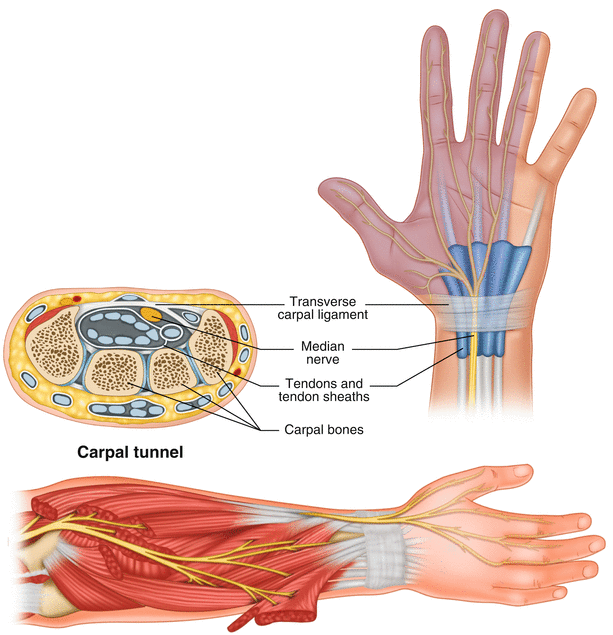Fig. 28.1
Ulnar nerve course in the distal and proximal upper extremity
A possible location for stimulation of radial and median nerves in the forearm for treatment of hand pain is shown in Fig. 28.2.


Fig. 28.2
Median nerve and radial nerve distribution
28.2.2 The Method of Suprascapular Nerve Stimulation for Treatment of Chronic Shoulder Pain
The suprascapular nerve can be a major factor in treating many painful shoulder conditions. The implanter must understand the bony anatomy of the shoulder and the nerve course. Fluoroscopic- or ultrasound-guided imaging is used to locate the suprascapular notch. The suprascapular nerve is located beneath the transverse scapular ligament in the scapular notch. Using a medial to lateral approach, the lead is placed entering over the medial scapula lateral to the upper thoracic spinous processes, traveling just superior and anterior to the spine of scapula, with electrode contacts overlying the suprascapular nerve in the scapular notch and supraspinous fossa (Fig. 28.3).


Fig. 28.3
Suprascapular nerve
The axillary nerve has a mixed purpose of both motor and sensory function (Fig. 28.4). In recent years implant of a PNS system to treat both shoulder motor dysfunction from stroke and pain from humeral head trauma has been described.


Fig. 28.4
Axillary nerve
28.3 Risk Assessment
1.
The patient with a high risk for epidural lead placement or major neurosurgical interventions may be a candidate for peripheral nerve placement in the upper extremity. In some disease states the implant of any lead, even in the periphery, may be too high risk.
2.




Skin infection is the most common problem with PNS. The skin condition in the area of the implant should be examined.
Stay updated, free articles. Join our Telegram channel

Full access? Get Clinical Tree







